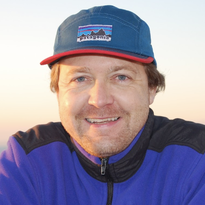Seth JohnPrincipal InvestigatorProfessor Seth John received his PhD from the MIT/Woods Hole Oceanographic Institution program in Chemical Oceanography followed by a postdoctoral fellowship at Caltech. He was a professor at the University of South Carolina, then started at the University of Southern California in 2015. Seth’s lab studies trace metal biogeochemical cycling in the oceans from a wide range of perspectives, from the analysis of metals and metal isotopes, to field studies, to computer modeling, all with the collaboration of an amazing research group!
|
Current lab members
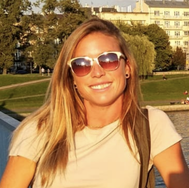
Emily Seelen; Postdoc (2018-present)
Emily received a BA from Gustavus Adolphus College and a PhD in Oceanography from the University of Connecticut. Emily’s first research adventure in the John lab was going to sea on the Gradients III cruise in the North Pacific Ocean. She is now focused on the development and implementation of PERI-SCOPE.
Emily received a BA from Gustavus Adolphus College and a PhD in Oceanography from the University of Connecticut. Emily’s first research adventure in the John lab was going to sea on the Gradients III cruise in the North Pacific Ocean. She is now focused on the development and implementation of PERI-SCOPE.
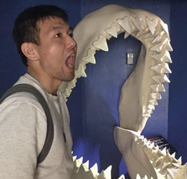
Shun-chung Yang; Postdoc (2017-present)
Shun got his education in Taiwan. After receiving Ph.D. degree in Geosciences in National Taiwan University, he did research in the Research Center for Environmental Changes, Academia Sinica as a postdoctoral researcher for 2 years. He has become a member of MTEL since 2017. Shun’s research interest is using isotope tools to study the cycling of trace metals in the ocean. He has developed novel and simple methods to achieve high quality Ni and Cu isotopic analysis in the lab. Now he is working on GEOTRACES GP15 samples by using the new methods. Besides research, he is into pingpong, meteorite collection and fossil hunting
Shun got his education in Taiwan. After receiving Ph.D. degree in Geosciences in National Taiwan University, he did research in the Research Center for Environmental Changes, Academia Sinica as a postdoctoral researcher for 2 years. He has become a member of MTEL since 2017. Shun’s research interest is using isotope tools to study the cycling of trace metals in the ocean. He has developed novel and simple methods to achieve high quality Ni and Cu isotopic analysis in the lab. Now he is working on GEOTRACES GP15 samples by using the new methods. Besides research, he is into pingpong, meteorite collection and fossil hunting
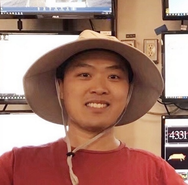
Xiaopeng Bian; PhD student (2017-present)
Xiaopeng obtained his Bachelor’s and Master’s degree in Geochemistry from Nanjing University before joining MTEL. Xiaopeng is interested in applying novel isotope techniques to solving various geochemical problems. Xiaopeng is working on GP15 GEOTRACES samples to study the distribution of various trace metals in North Pacific. Xiaopeng’s thesis researches focus on studying the Ni cycling in modern oceans, which involves the culture work of phytoplankton, measurement of Ni isotopic compositions of modern seawater, sediment pore water and different Ni sources and sinks to and from the modern oceans.
Xiaopeng obtained his Bachelor’s and Master’s degree in Geochemistry from Nanjing University before joining MTEL. Xiaopeng is interested in applying novel isotope techniques to solving various geochemical problems. Xiaopeng is working on GP15 GEOTRACES samples to study the distribution of various trace metals in North Pacific. Xiaopeng’s thesis researches focus on studying the Ni cycling in modern oceans, which involves the culture work of phytoplankton, measurement of Ni isotopic compositions of modern seawater, sediment pore water and different Ni sources and sinks to and from the modern oceans.
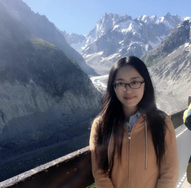
Hengdi Liang; PhD student (2017-Present)
Hengdi obtained her B.S. degree in geology from Nanjing University in 2017 before joining MTEL. With an interest in computer modeling and how ocean biogeochemical processes control trace metals and other tracers, her research focused on modeling the global biogeochemical cycles and the driving mechanisms of ocean tracers (including copper and alkalinity) with AWESOME OCIM (AO). She also contributed to creating the Graphical User Interface (GUI) of AO.
Hengdi obtained her B.S. degree in geology from Nanjing University in 2017 before joining MTEL. With an interest in computer modeling and how ocean biogeochemical processes control trace metals and other tracers, her research focused on modeling the global biogeochemical cycles and the driving mechanisms of ocean tracers (including copper and alkalinity) with AWESOME OCIM (AO). She also contributed to creating the Graphical User Interface (GUI) of AO.
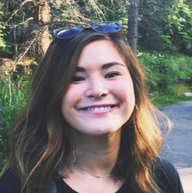
Rachel Kelly; PhD Student (2016-Present)
Rachel received her B.S. in Marine Science (Chemistry Minor) from the University of South Carolina (the other USC) before joining MTEL in 2016. In her first two years with MTEL she observed the metal limitations of marine bacteria growth and how this limitation affected the viral dynamics of the paired bacteriophage. Rachel then studied samples collected in coastal marine and riverine environments affected by the 2017 Thomas Fire. She analyzed how these metals emitted from burned biomass affected these aquatic ecosystems. Currently, Rachel is finishing up her PhD and completing her studies by analyzing trace metals in 246 surface seawater samples collected during the TARA Pacific Expedition. By combining the metal data with other environmental data and using a machine learning algorithm she is investigating which geochemical and biological factors are driving the surface metal distributions measured during the TARA Pacific Expedition.
Rachel received her B.S. in Marine Science (Chemistry Minor) from the University of South Carolina (the other USC) before joining MTEL in 2016. In her first two years with MTEL she observed the metal limitations of marine bacteria growth and how this limitation affected the viral dynamics of the paired bacteriophage. Rachel then studied samples collected in coastal marine and riverine environments affected by the 2017 Thomas Fire. She analyzed how these metals emitted from burned biomass affected these aquatic ecosystems. Currently, Rachel is finishing up her PhD and completing her studies by analyzing trace metals in 246 surface seawater samples collected during the TARA Pacific Expedition. By combining the metal data with other environmental data and using a machine learning algorithm she is investigating which geochemical and biological factors are driving the surface metal distributions measured during the TARA Pacific Expedition.
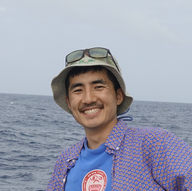
Phil Kong; PhD student (2020- present)
After working as a contractor for the U.S. Environmental Protection Agency’s Climate Change Division, Phil joined MTEL to study trace metal chemistry in the oceans. He currently has a keen interest in investigating processes that impact distributions of trace metals in marine particles. Phil received his M.S. in geosciences from Penn State University and B.S. in biochemistry and geology from Washington and Lee University. www.kpkong.com
After working as a contractor for the U.S. Environmental Protection Agency’s Climate Change Division, Phil joined MTEL to study trace metal chemistry in the oceans. He currently has a keen interest in investigating processes that impact distributions of trace metals in marine particles. Phil received his M.S. in geosciences from Penn State University and B.S. in biochemistry and geology from Washington and Lee University. www.kpkong.com
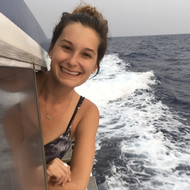
Emily Townsend; Lab technician (2013-2015, 2019 - present)
Emily obtained her B.S. in Marine Science from the University of South Carolina and initially started at MTEL as an undergraduate researcher. She helped process GEOTRACES samples from the Eastern Tropical Pacific and studied Zn and Cd isotopes in cap carbonates. After spending a few years in Hawaii, she is now back at MTEL working as a lab tech and assisting with the development of PERI-SCOPE while pursuing a Master’s degree in Environmental Engineering from the University of Southern California.
Emily obtained her B.S. in Marine Science from the University of South Carolina and initially started at MTEL as an undergraduate researcher. She helped process GEOTRACES samples from the Eastern Tropical Pacific and studied Zn and Cd isotopes in cap carbonates. After spending a few years in Hawaii, she is now back at MTEL working as a lab tech and assisting with the development of PERI-SCOPE while pursuing a Master’s degree in Environmental Engineering from the University of Southern California.
Former lab members (an incomplete and perhaps out-of-date list!)
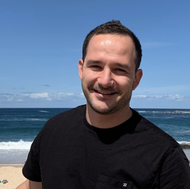
Benoit Pasquier; Postdoc (2019–2021)
Benoit studied mathematics and physics at École Polytechnique ParisTech (MS, 2007), mathematical finance at Paris Dauphine University (MS, 2008), and environmental sciences at UNSW (MS, 2010). After a detour as a tender-proposal engineer for Degrémont (water-treatment subsidy of Suez Environment), he received his PhD in applied mathematics and oceanography at UNSW in 2017. Since then he spent 2 years as a postdoc in the Department of Earth System Sciences at UC Irvine and joined the John Lab at USC in November 2019, working remotely from Sydney. With a focus on modeling global marine biogeochemical cycles, his research overlaps mathematics, biology, chemistry, and computer science. He has developed the first inverse global biogeochemistry model coupling macronutrients and dissolved iron and has been working lately on new trace-metal and isotope models with the John Lab. In parallel, he his developing AIBECS, a software written in Julia to simulate marine tracers. Link to website: www.bpasquier.com
Benoit studied mathematics and physics at École Polytechnique ParisTech (MS, 2007), mathematical finance at Paris Dauphine University (MS, 2008), and environmental sciences at UNSW (MS, 2010). After a detour as a tender-proposal engineer for Degrémont (water-treatment subsidy of Suez Environment), he received his PhD in applied mathematics and oceanography at UNSW in 2017. Since then he spent 2 years as a postdoc in the Department of Earth System Sciences at UC Irvine and joined the John Lab at USC in November 2019, working remotely from Sydney. With a focus on modeling global marine biogeochemical cycles, his research overlaps mathematics, biology, chemistry, and computer science. He has developed the first inverse global biogeochemistry model coupling macronutrients and dissolved iron and has been working lately on new trace-metal and isotope models with the John Lab. In parallel, he his developing AIBECS, a software written in Julia to simulate marine tracers. Link to website: www.bpasquier.com
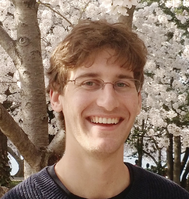
Nick Hawco; Postdoc (2017-2019)
Currently faculty at the University of Hawaii. https://www.soest.hawaii.edu/oceanography/team/nicholas-hawco/
Currently faculty at the University of Hawaii. https://www.soest.hawaii.edu/oceanography/team/nicholas-hawco/
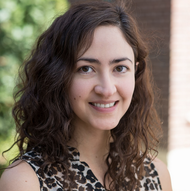
Paulina Pinedo-González; Postdoc (2016-2018)
Paulina received her PhD from the University of Southern California, where she studied the links between trace metal distribution and primary productivity in the oceans. Paulina joined MTEL as a postdoctoral researcher in 2017. There she worked on the Gradients 1.0 and 2.0 projects studying the distribution of some biologically essential (Fe, Cd, Zn, Ni, Cu) and anthropogenic metals (Pb) in the North Pacific to understand the physico-chemical and biological influences that interact to control their biogeochemistry. Paulina is currently a postdoctoral researcher at Lamont-Doherty Earth Observatory where she studies the distribution of thorium and neodymium isotopes as tracers for dust fluxes to the ocean and circulation patterns.
Paulina received her PhD from the University of Southern California, where she studied the links between trace metal distribution and primary productivity in the oceans. Paulina joined MTEL as a postdoctoral researcher in 2017. There she worked on the Gradients 1.0 and 2.0 projects studying the distribution of some biologically essential (Fe, Cd, Zn, Ni, Cu) and anthropogenic metals (Pb) in the North Pacific to understand the physico-chemical and biological influences that interact to control their biogeochemistry. Paulina is currently a postdoctoral researcher at Lamont-Doherty Earth Observatory where she studies the distribution of thorium and neodymium isotopes as tracers for dust fluxes to the ocean and circulation patterns.
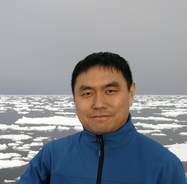
Ruifeng Zhang; Visiting Scientist (2013, 2015-2017)
Ruifeng is a professor at Shanghai Jiao Tong University. He first worked at MTEL in South Carolina measuring Fe isotopes on particulate samples and in glacial rivers. He returned to the University of Southern California to work on Arctic GEOTRACES during 2015-2017. He is current working at School of Oceanography, SJTU, studying the biogeochemical cycling of trace metals in Southern Ocean and Chinese marginal seas, and has been involved in Chinese GEOTRACES work in the western North Pacific. Link(http://soo.sjtu.edu.cn/szTeachers/3587.html)
Ruifeng is a professor at Shanghai Jiao Tong University. He first worked at MTEL in South Carolina measuring Fe isotopes on particulate samples and in glacial rivers. He returned to the University of Southern California to work on Arctic GEOTRACES during 2015-2017. He is current working at School of Oceanography, SJTU, studying the biogeochemical cycling of trace metals in Southern Ocean and Chinese marginal seas, and has been involved in Chinese GEOTRACES work in the western North Pacific. Link(http://soo.sjtu.edu.cn/szTeachers/3587.html)
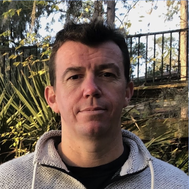
Chris Marsay; Potsdoc (2013-2015)
Chris worked in the lab developing novel experiments to probe the exchange of Fe isotopes between dissolved and particulate phases. He also analyzed particulate samples for the GEOTRACES Pacific transect. He is currently working at Skidaway Institute of Oceanography, studying the atmospheric deposition of Fe and other trace elements to the surface ocean, and has since been involved in other GEOTRACES work in the Arctic and Pacific Oceans.
Chris worked in the lab developing novel experiments to probe the exchange of Fe isotopes between dissolved and particulate phases. He also analyzed particulate samples for the GEOTRACES Pacific transect. He is currently working at Skidaway Institute of Oceanography, studying the atmospheric deposition of Fe and other trace elements to the surface ocean, and has since been involved in other GEOTRACES work in the Arctic and Pacific Oceans.
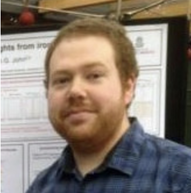
Tim Conway; Postdoc (2010-2014)
Currently faculty at the University of South Florida. https://www.usf.edu/marine-science/faculty/faculty-directory/chemical-oceanography/tim-conway.aspx
Currently faculty at the University of South Florida. https://www.usf.edu/marine-science/faculty/faculty-directory/chemical-oceanography/tim-conway.aspx
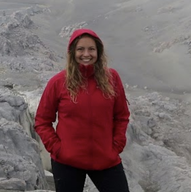
Brandi Revels; Masters student (2011 - 2013)Brandi left MTEL after analyzing over 300 particulate Fe isotope samples from the GEOTRACES North Atlantic transect and went on to complete her PhD at ETH Zürich. There she focused on Fe, Cu, Ni, Zn, and Mo in riverine environments with a special focus on the particulate load, partitioning within the particulate load, and partitioning between the particulate, colloidal, and truly dissolved loads. She has developed novel techniques for the isotopic analysis of Ni and Mo and has lead several sampling expeditions to the Amazon, above the Arctic circle, and the Alps. Her current interests include the modern-day cycling of elements and their isotopes, the change this cycling has, and will have in response to changing climatic conditions, and how these ultimately influence the carbon cycle of our planet. She currently resides in Switzerland and owns a scientific consultancy company. Her hobbies include traveling, snowboarding, and writing up papers from her PhD.
